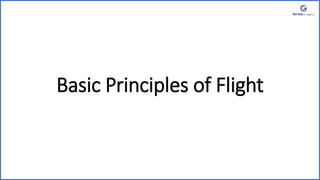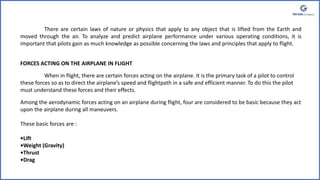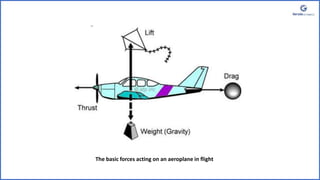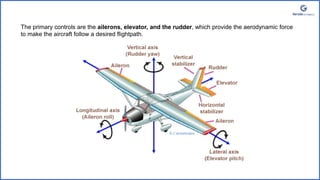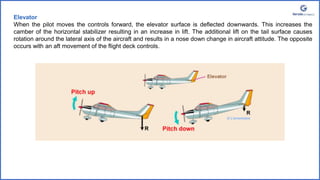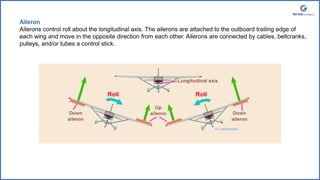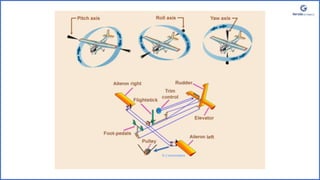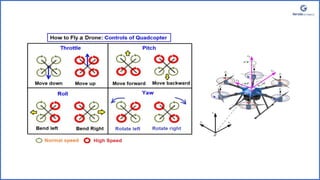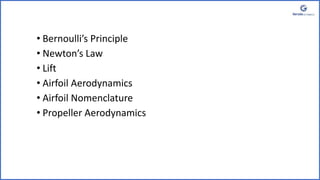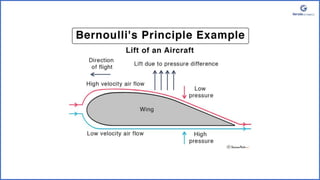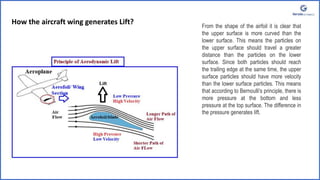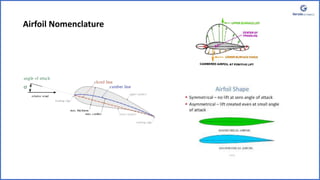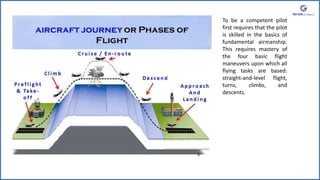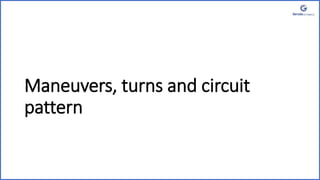The document discusses the basic principles of flight, including the four main forces acting on an airplane (lift, weight, thrust, drag), how flight controls like the elevator, ailerons, and rudder work to control the aircraft, aerodynamic concepts like Bernoulli's principle and how wings and propellers generate lift and thrust, the basics of take-off, flight, and landing, and maneuvers, turns and circuit patterns. It provides explanations of these fundamental aspects of flight to build knowledge for pilots.
